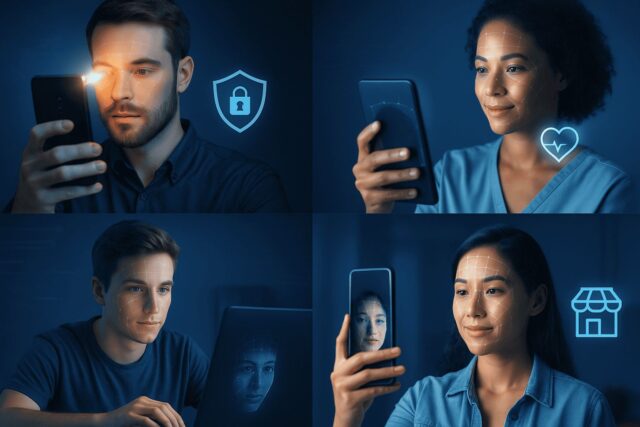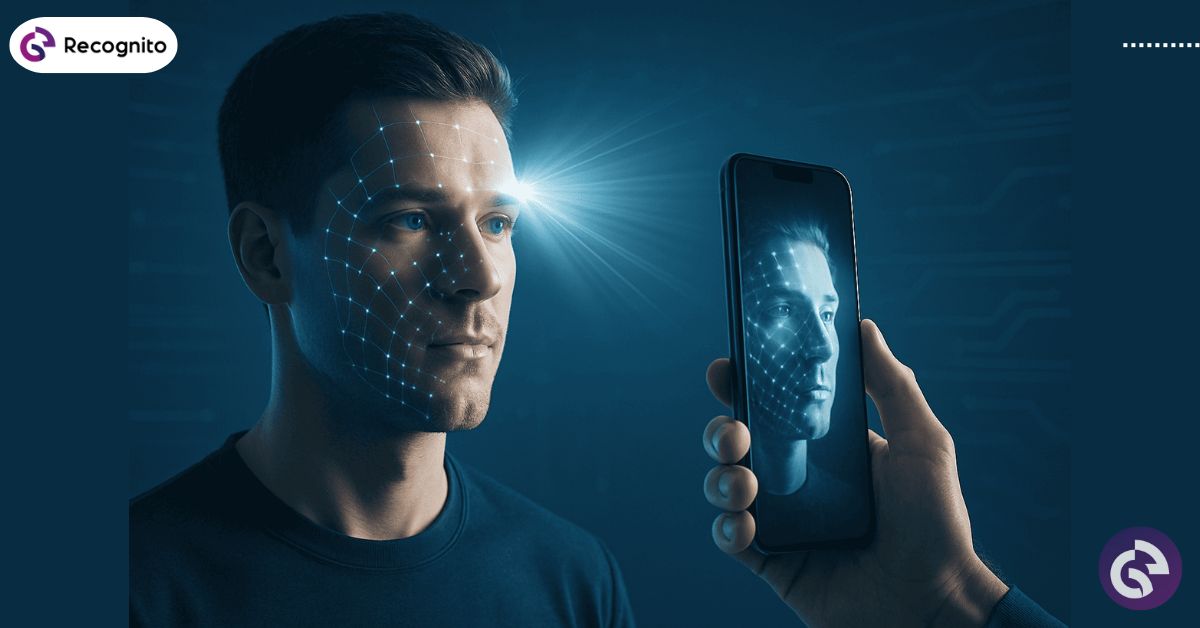Introduction: The Age of Digital Deception
Let’s face it, identity fraud is getting smarter by the day. Hackers don’t just steal passwords anymore; they steal your face. From high-resolution printouts to eerily convincing deepfakes, modern fraudsters are pulling out all the stops.
In this reality, verifying if someone is physically present, not just a picture of them, has become critical. That’s where flash-based face liveness detection becomes your digital bouncer. It’s fast, smart, and doesn’t fall for cheap tricks.
Let’s break down what this technology is, how it works, and why it’s changing the identity verification game in 2025.
🔦 What Is Flash-Based Face Liveness Detection?
Flash-based face liveness detection uses a brief burst of light from a device’s flash or screen to determine if a person in front of a camera is real and alive. It works by analyzing how light reflects and scatters on human skin a pattern that can’t be mimicked by a photo, video, or silicone mask.
This technique is part of a broader group of technologies known as liveness detection SDKs, more specifically a face liveness detection SDK, which is embedded into apps or systems to prevent spoofing attacks using facial cues and real-time analysis.
Here’s how it works in plain English:
- Flash is triggered by the camera or screen.
- Light hits the face, and the system observes how it bounces off.
- AI evaluates the reflection patterns, skin texture, and depth.
- Spoof attempts fail because fake surfaces reflect light in unnatural ways.
It’s like shining a flashlight on a wax statue and instantly knowing it’s not human.
Flash-Based Detection vs. Passive & Active Liveness Checks
| Feature | Flash-Based Liveness | Passive Liveness | Active Liveness |
| User interaction required | No | No | Yes |
| Real-time detection speed | < 1 second | Fast | Moderate |
| Spoof attack resistance | Very High | Moderate to High | High |
| User experience | Seamless | Seamless | Slightly interruptive |
| Best suited for | Mobile & Web apps | General applications | High-security systems |
Passive liveness detection relies on subtle cues without flash. Active liveness detection checks involve prompting the user to blink, smile, or shift their head position. Flash-based detection blends accuracy and ease no effort from the user, high trust for the system.
🧠 The Science Behind Flash-Based Detection
Let’s get a bit nerdy (but still easy to understand). Human skin interacts with light in ways fake materials can’t reproduce.
Key biological markers:
- Subsurface scattering: Real skin absorbs and re-emits light.
- Natural reflectance: Skin reflects flash unevenly due to pores and texture.
- Color shifting: Blood under the skin changes how light is perceived.
- Depth variation: Even twins don’t have identical 3D facial contours.
When flash is used, the liveness detection SDK evaluates these unique reactions. Photos, masks, or videos simply don’t behave the same way.
Real-World Use Cases: Where Flash-Based Detection Shines
From finance to e-learning, this technology is being deployed wherever trust matters.
🏦 1. Banking & Fintech
To secure the onboarding process, financial institutions across Latin America are turning to Aware’s biometric technology. Their approach includes real-time face verification and liveness checks to stop fraud before it starts.
📚 Aware’s Case Study on Liveness Detection in Banking
🏥 2. Healthcare & Telemedicine
To prevent impersonation, telehealth systems are now integrating liveness detection into their facial recognition workflows. This ensures the person accessing medical records or joining a virtual consultation is truly the patient, not a photo, deepfake, or stand-in.
📚 VerifiNow’s PatientVerifi uses biometric liveness detection to enhance HIPAA compliance, prevent prescription abuse, and safeguard telehealth access.
🎓 3. Online Exams & E‑learning
Remote proctoring systems now use advanced biometric tools to ensure test-takers are real and present. This protects exam integrity in remote education.
📚 How Proctoring Platforms Prevent Cheating with Liveness Detection
📚 4. E‑commerce Marketplaces
Smile ID has processed over 200 million face verifications across Africa using a secure SDK that includes liveness detection, helping platforms onboard real users and cut fraud.
👉 Smile ID’s 200M+ Biometric Verifications with Liveness Detection

🧪 Flash-Based Face Liveness Detection in Action
Want to see how it blocks spoofing? Let’s test it against common attack methods:
| Spoof Method | Flash Detection Outcome |
| Printed photo | Blocked ✅ |
| Phone screen replay | Blocked ✅ |
| Deepfake video | Blocked ✅ |
| 3D silicone mask | Likely blocked ✅ |
| Identical twin | Flagged for review ⚠️ |
It’s not magic, it’s machine learning that understands what “real” looks like. This makes it one of the most effective forms of liveness detection for face recognition, especially in real-time mobile applications where fraud risks are high.
🔧 Developer Integration Tips
Adding flash-based face liveness detection to your app doesn’t require a PhD in AI.
What you need:
- A smartphone or web camera with a screen flash or LED
- A face recognition SDK that supports flash-based detection
- API documentation for quick deployment
Look for an SDK that includes:
- Real-time decision-making
- Passive fallback options
- Support for iOS, Android, and web
- Pre-built UI/UX templates
- Spoof detection scoring and audit logs
The more user-friendly it is, the faster your team can go live.
🔄 Final Thoughts
When it comes to biometric security, recognizing a face isn’t enough anymore. You need to confirm that it’s a living, breathing human behind the camera. That’s why flash-based face liveness detection is fast becoming a must-have for modern identity systems.
It’s simple to use, hard to fool, and doesn’t ask users to do silly things like blink or nod on command. Whether you’re building for finance, healthcare, education, or e-commerce, it offers the ideal mix of accuracy, speed, and usability.
If you’re ready to boost your fraud defenses without slowing down your user experience, it’s time to look for a trusted solution provider.
Recognito, a top performer in the NIST FRVT evaluations, offers a robust and developer-friendly liveness detection SDK trusted across industries. Want to explore more?
👉 Check out our open-source tools and documentation on GitHub.

